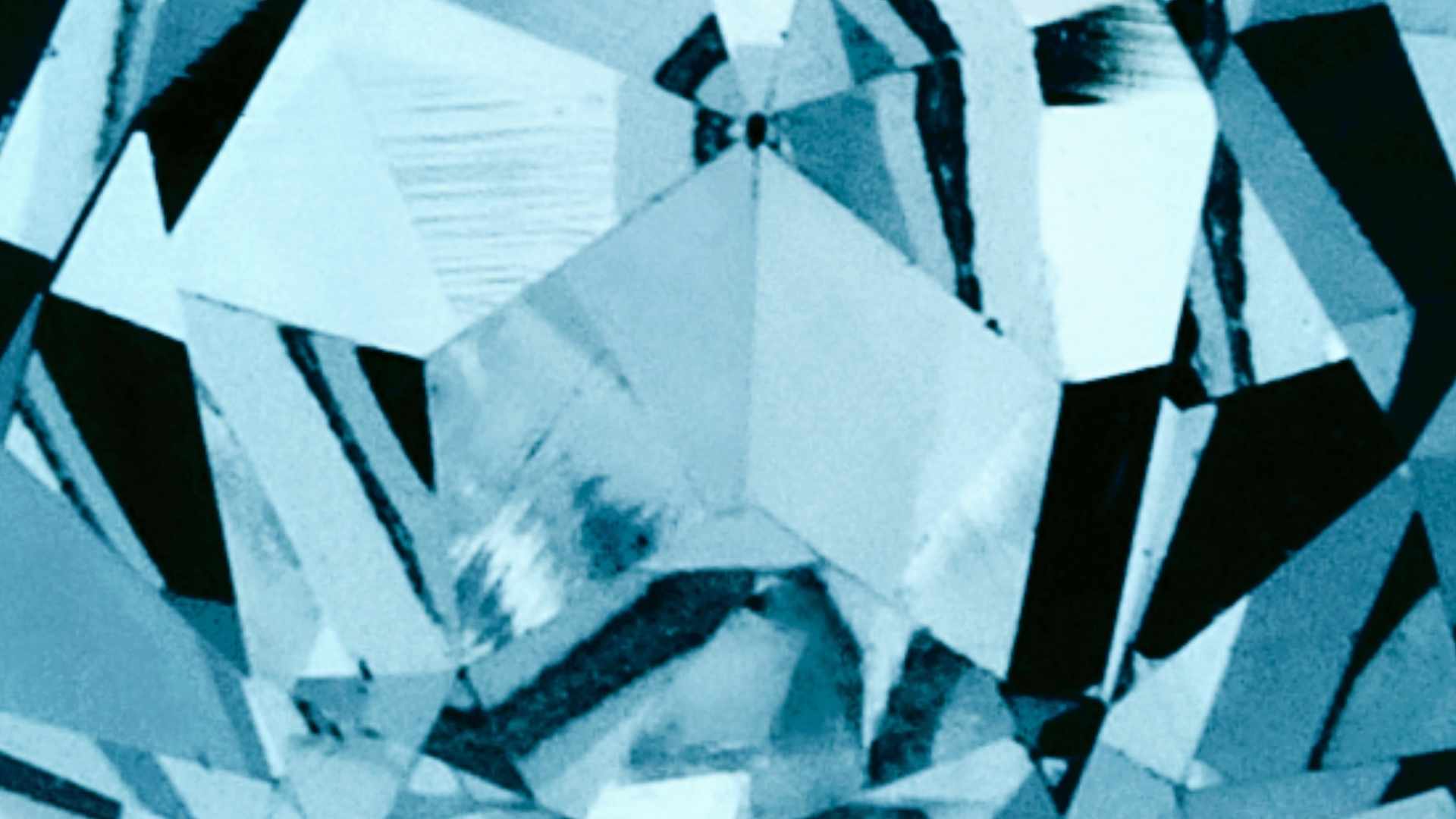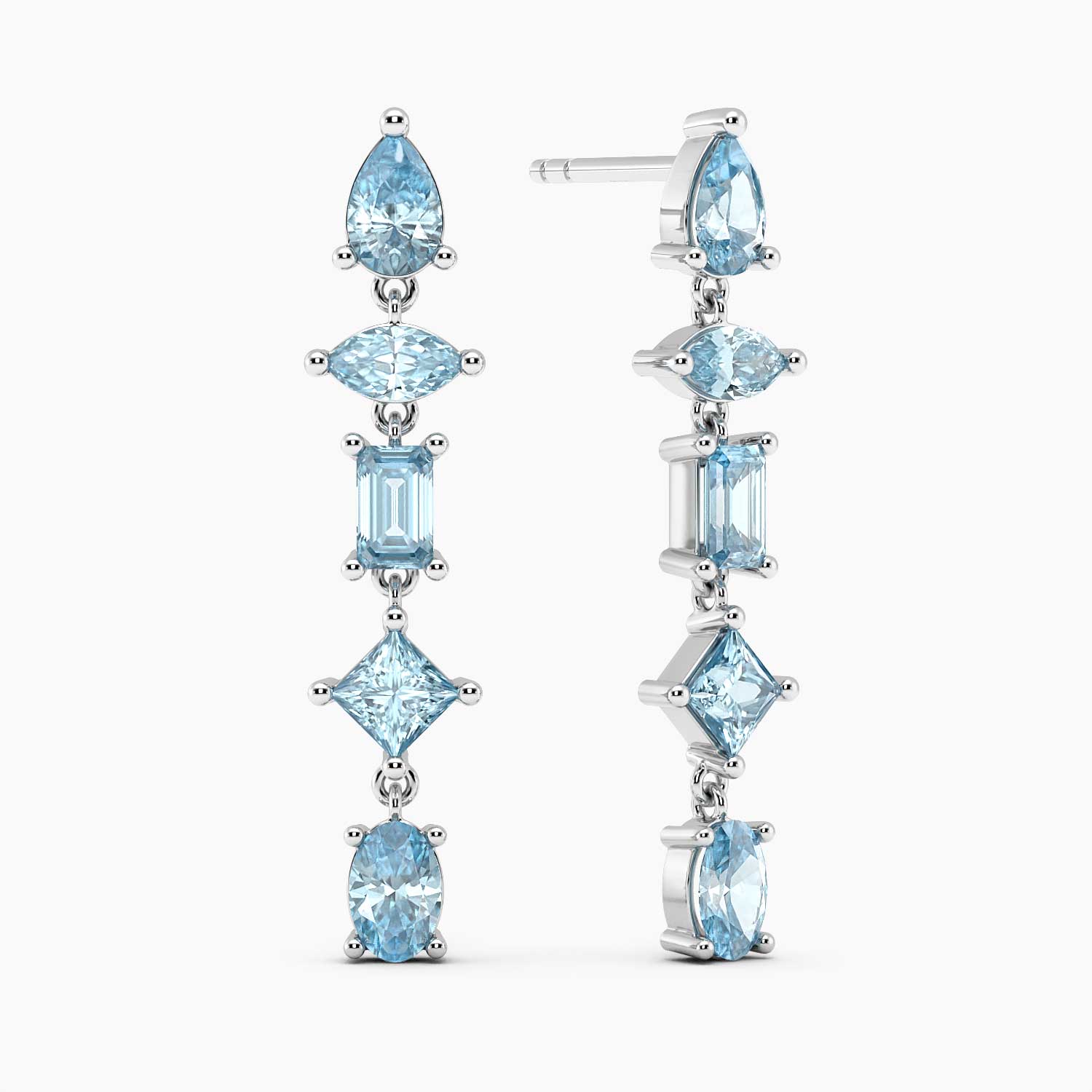Blue Topaz
TOPAZ
December Birthstone

Topaz: The Enchanting December Birthstone
Topaz, the birthstone for December, is cherished for its captivating colors and symbolic energy. Representing love, joy, and vitality, topaz has a long history of use in both spiritual and decorative contexts. For those born in December, topaz is a symbol of wisdom, strength, and warmth, making it a cherished gem that’s perfect for commemorating the winter season.
Understanding Topaz Gemstones
What is Topaz?
Topaz is a silicate mineral that comes in a stunning array of colors, from clear white and pale blue to rich amber, pink, and even deep red. Known for its hardness, ranking 8 on the Mohs scale, topaz is durable enough for everyday wear, yet it should still be handled with care to prevent chipping along its natural cleavage lines.
Topaz’s Composition and Hardness
Topaz is primarily composed of aluminum and fluorine, which contribute to its unique crystalline structure and durability. Its clarity and brilliance make it an ideal gemstone for various jewelry types, and it is often cut to enhance its natural beauty and color.
Colors and Varieties of Topaz
Topaz is a versatile gemstone, available in a wide range of colors:
- Blue Topaz: The most common and popular color, especially treated varieties like Swiss Blue and London Blue.
- Imperial Topaz: A rare, golden-orange topaz that is highly prized for its warm and rich hue.
- White Topaz: A colorless variety often used as an alternative to diamonds.
- Pink and Red Topaz: Rare and valuable, with vibrant, warm colors.
- Mystic Topaz: A treated topaz that displays a rainbow of colors due to a special coating.
The History and Origins of Topaz
Ancient Myths and Symbolism
Throughout history, topaz has been associated with love, courage, and clarity. In ancient Egypt, it was believed that the golden hues of topaz were inspired by the sun god Ra, symbolizing protection and vitality. Greek mythology also attributed topaz with protective qualities, while in medieval times, it was thought to cure physical ailments.
Cultural Significance of Topaz
Topaz has appeared in many cultural stories as a stone of strength and healing. In Renaissance Europe, it was believed to dispel anger and promote harmonious relationships, while ancient Indian and Roman cultures used topaz as a symbol of status and wisdom.
Topaz in Historical Jewelry
Topaz has long been a favorite in royal jewelry, especially the Imperial topaz variety, which was highly prized by Russian tsars. Its presence in crowns, rings, and amulets throughout history reflects its status as a stone of wealth and beauty.
Emerald Colors
Topaz as the December Birthstone
Why Topaz is the Birthstone for December
Topaz was designated as the December birthstone due to its wintery hues and warm, comforting energies. It is associated with qualities like inner peace, mental clarity, and emotional balance, making it an ideal stone for individuals born during the winter season.
Zodiac Connections: Sagittarius and Capricorn
Topaz aligns with the characteristics of Sagittarians and Capricorns, offering support for their personal and professional growth.
- Topaz for Sagittarius: Known for their adventurous spirit, Sagittarians benefit from topaz’s energies of joy, motivation, and vitality.
- Topaz for Capricorn: Capricorns are strengthened by topaz’s support for mental clarity, resilience, and confidence, making it a grounding stone for personal and career growth.

Healing Properties and Metaphysical Benefits of Topaz
Emotional Healing Properties
Topaz is renowned for its calming and supportive energies, helping to alleviate stress, promote positive thinking, and foster harmony. It is often used in emotional healing practices to boost self-confidence and encourage emotional resilience.
Physical Healing Benefits
In holistic practices, topaz is said to aid in digestion, promote overall health, and support the immune system. While scientific evidence is limited, its historical use for wellness continues to make it popular in alternative healing.
Chakra Connections: Sacral and Solar Plexus Chakras
Topaz is connected to the sacral and solar plexus chakras, promoting personal power, creativity, and self-confidence. Its energy is believed to encourage personal growth, drive, and positivity.
Types of Topaz and Their Unique Qualities
Blue Topaz: The Most Popular Choice
Blue topaz, ranging from pale sky blue to deep London blue, is highly sought after for its calming and versatile color. It is often heat-treated to achieve the vibrant hues seen in jewelry.
Imperial Topaz: The Rare and Valuable Variety
Imperial topaz, a natural golden-yellow or pinkish-orange stone, is one of the rarest and most valuable types of topaz. Its warm tones and scarcity make it highly prized among collectors and gem enthusiasts.
White, Pink, and Golden Topaz
White topaz, colorless and sparkling, is a popular alternative to diamonds. Pink and golden varieties, though rare, are cherished for their romantic, warm hues.
Mystic Topaz: A Color-Treated Wonder
Mystic topaz is created through a special treatment that gives the stone a rainbow-like appearance. This variety is visually striking, with iridescent colors that change with light and angle.
Topaz Jewelry: Styles and Options
Topaz’s versatility makes it suitable for all jewelry types, allowing for creative designs and settings.
Popular Topaz Jewelry Types
Topaz is a favorite in various jewelry forms, including:
- Topaz Rings: From engagement rings to cocktail rings, topaz rings are popular for their durability and vibrant colors.
- Topaz Necklaces: Topaz pendants and necklaces are elegant and versatile, perfect for everyday or formal wear.
- Topaz Earrings: Available in studs, hoops, and dangles, topaz earrings add a pop of color and sophistication.
Topaz Cuts and Shapes
Topaz is often cut into classic shapes like oval, round, and emerald cuts, which highlight its natural brilliance. Fancy cuts like pear, marquise, and trillion are also popular for a unique touch.
Best Metal Pairings for Topaz Jewelry
Topaz pairs well with various metals. Yellow gold complements warm topaz colors, while silver and white gold enhance cooler hues like blue topaz.
Choosing High-Quality Topaz
When selecting topaz, consider the 4 Cs—color, clarity, cut, and carat weight—to assess quality and value.
Evaluating Color, Clarity, and Carat
Topaz with vibrant color, minimal inclusions, and a well-proportioned cut is generally considered the highest quality. Larger carat weights are available at accessible prices, making topaz a luxurious yet affordable option.
Understanding Topaz Treatments and Enhancements
Blue and other colored topaz are often heat-treated or irradiated to enhance color. Understanding these treatments helps buyers make informed decisions about authenticity and value.
Australian Standards for Topaz Quality
Australian jewelers adhere to high standards, offering ethically sourced, well-cut, and certified topaz gemstones.
Caring for Topaz Jewelry
Cleaning and Maintenance Tips
Topaz can be cleaned with mild soap and water, but avoid harsh chemicals and extreme heat. Soft cloths are ideal for polishing, while ultrasonic cleaners should be used sparingly.
Proper Storage for Topaz
Store topaz separately from harder gemstones to prevent scratches. Soft pouches or padded boxes are ideal for keeping topaz jewelry safe when not in use.
Where to Buy Topaz in Australia
Australia has many trusted retailers offering high-quality topaz, from physical stores to reputable online platforms.
Top Retailers and Jewelers in Australia
Topaz is available at well-known Australian jewelers, many of which provide ethically sourced gemstones with certification.
Online Shopping Tips for Topaz
When purchasing topaz online, ensure the retailer is credible and provides clear descriptions, images, and quality assurances.
How to Authenticate Genuine Topaz
Request a certificate of authenticity to verify your topaz’s origin, color treatment, and quality.
Frequently Asked Questions (FAQs)
1. Is topaz a durable gemstone?
Yes, with a hardness of 8 on the Mohs scale, topaz is suitable for everyday wear but should be handled with care to avoid chips.
2. What are the most valuable colors of topaz?
Imperial topaz, with its warm orange-pink hues, and vibrant blue topaz are among the most prized varieties.
3. How can I tell if my topaz is treated?
Treated topaz typically has vibrant colors, such as Swiss blue or London blue, while untreated topaz colors are often softer.
4. Is topaz suitable for daily wear?
Yes, topaz is durable enough for daily wear, but avoid rough handling to prevent damage.
5. What metals pair best with topaz?
Yellow gold enhances warm topaz tones, while silver and white gold suit cooler hues like blue topaz.
6. How to care for topaz jewelry?
Use mild soap and water for cleaning and store topaz separately to prevent scratches.

